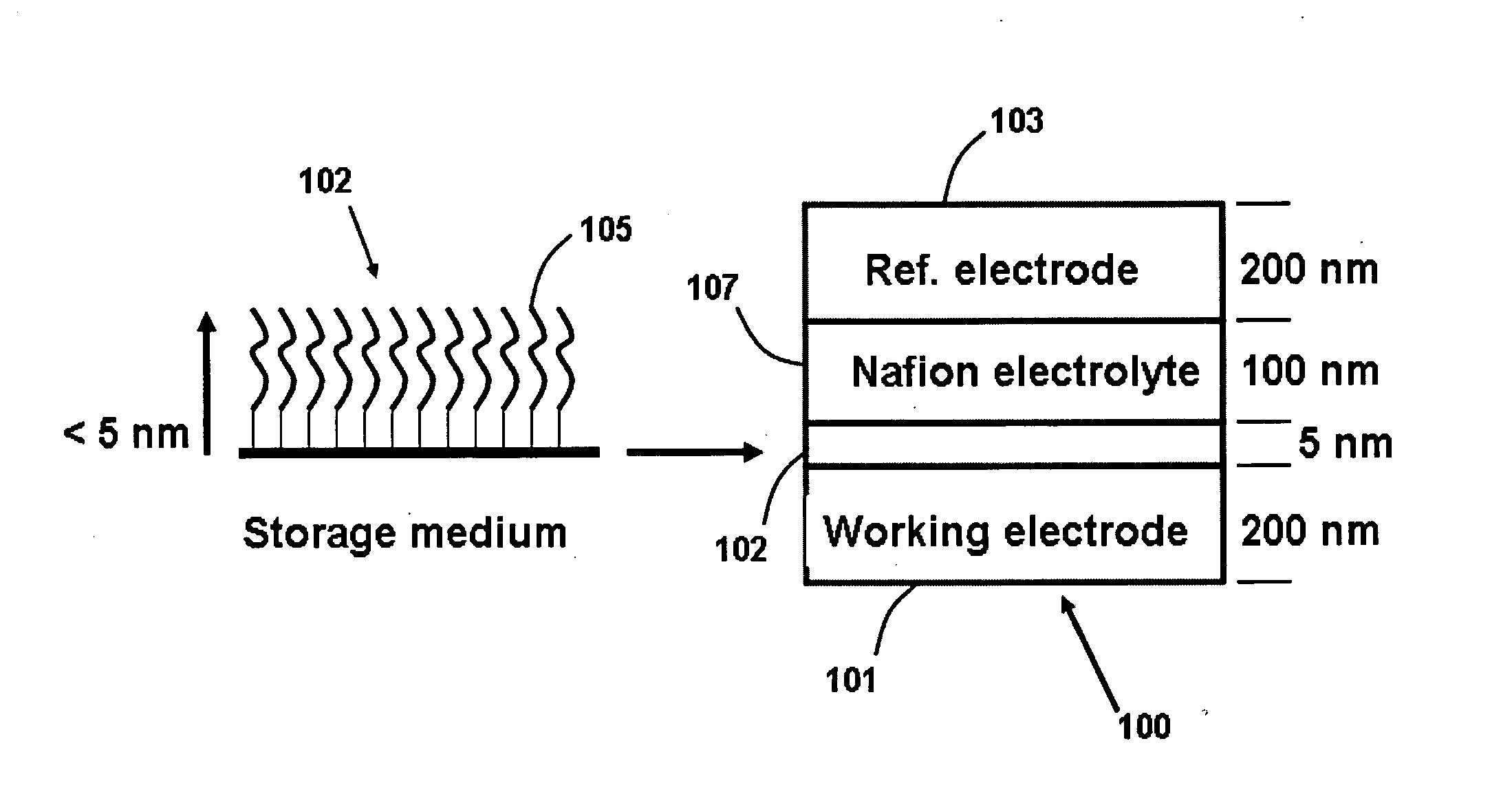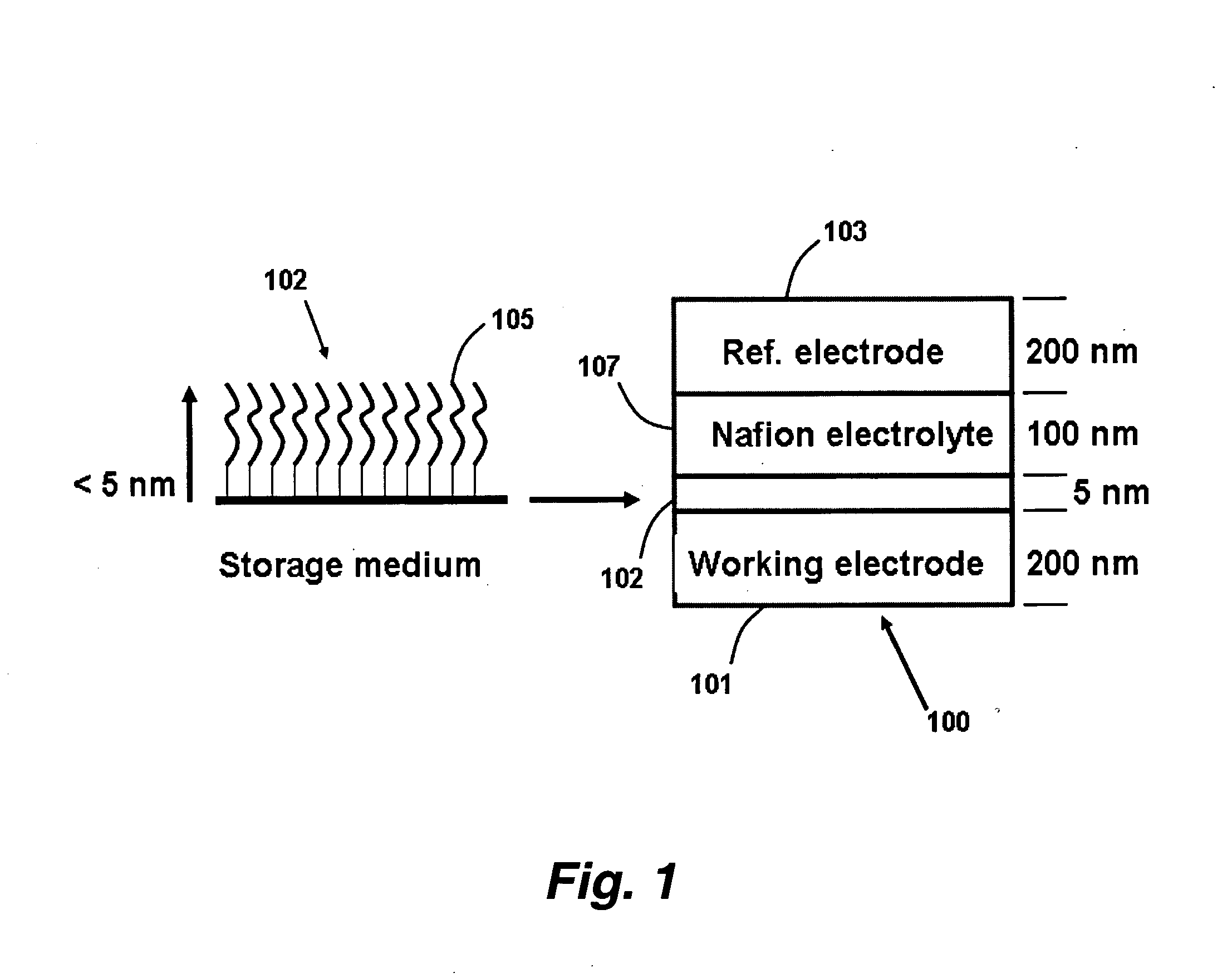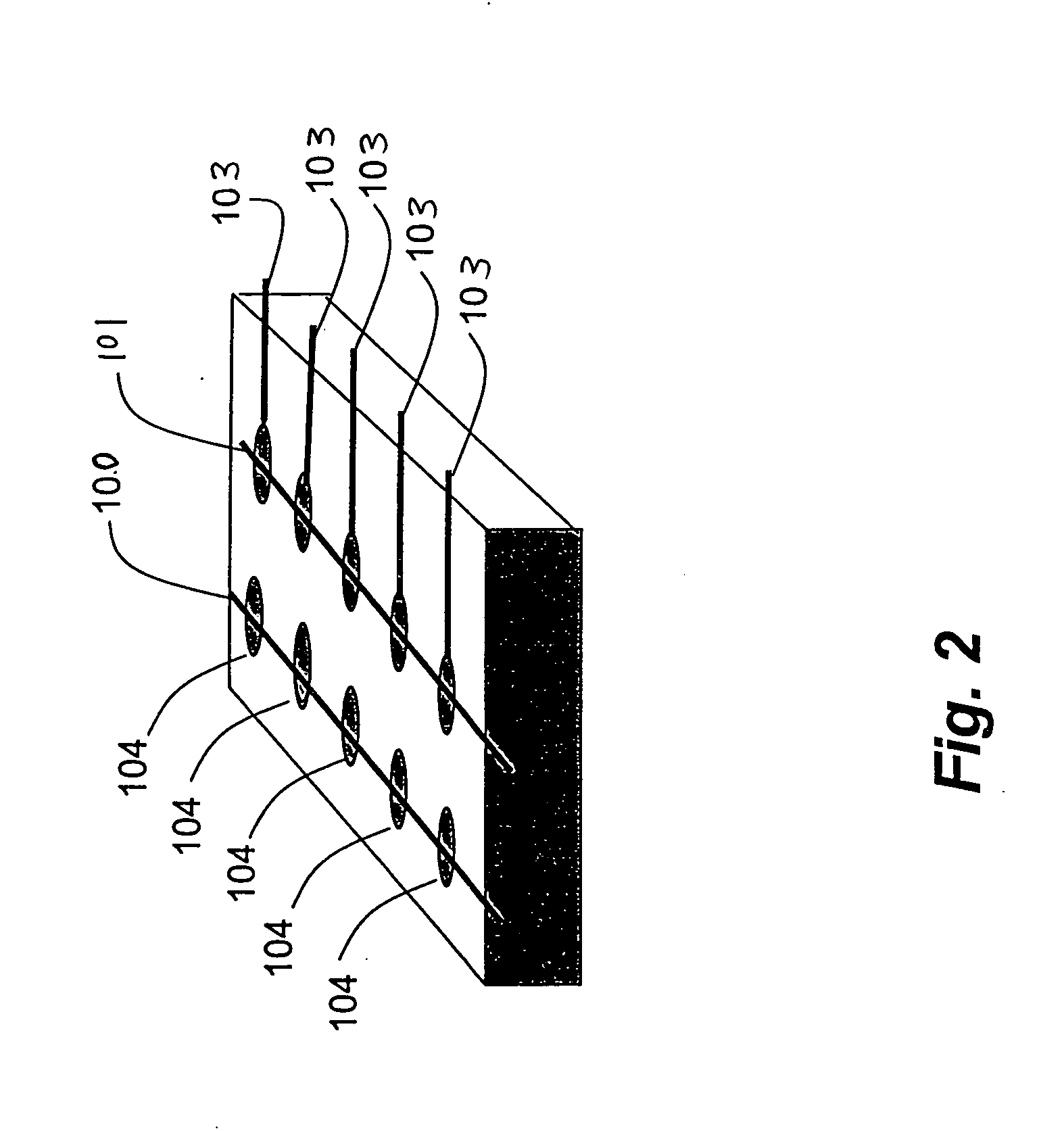High density non-volatile memory device
a non-volatile, high-density technology, applied in the field of memory devices, can solve the problems of unsuitable molecular memory use, inability to meet the requirements of molecular memory, and intrinsic diffraction-limited size constraints of light-mediated data storage, and achieve the effect of preventing charge leakage and suitability mechanical properties
- Summary
- Abstract
- Description
- Claims
- Application Information
AI Technical Summary
Benefits of technology
Problems solved by technology
Method used
Image
Examples
example 1
Thiol-Porphyrins for Attachment to Electroactive Surfaces as Molecular Memory Devices
I. Molecular Design
This example presents the design and synthesis of porphyrins that can be attached covalently, in defined geometries, to electroactive surfaces. For the present purposes, we consider only the surface of a gold electrode. Three design features we sought to obtain included the following: (1) The ability to attach porphyrins via a sulfide linkage to the gold electrode surface with the porphyrins oriented vertically or horizontally. (2) The ability to tune the porphyrin electrochemical oxidation potential through the use of electron-withdrawing or releasing substituents at the periphery of the porphyrin, or the use of different metals in metalloporphyrins. (3) The use of thiol protecting groups that would cleave spontaneously on the gold surface, thereby avoiding the potential practical problems of handling free thiols.
In order to achieve a vertical orientation of the porphyrin ...
example 2
Setting and Reading the State of a Porphyrinic Macrocycle
I. Preparation of Gold Electrodes, Formation of Electrochemical Cell, Deposition of Thiol-Porphyrin Monolayer.
Glass slides were soaked in 90° C. piranha solution for thirty minutes, thoroughly rinsed with doubly distilled water, and dried under vacuum. A 1 nm layer of chromium was evaporated onto the glass, followed by 100 nm of gold through a thin mask consisting of four parallel lines, each with a width of approximately 75 microns, spaced at approximately 1 mm intervals. All depositions were done at 10−6 torr using an E-beam evaporator.
Immediately after venting of the vacuum system, the slides were removed and stored under dry ethanol until use. The slides were dried with a stream of nitrogen and a piece of PDMS with a 3 mm diameter hole in the center was immediately placed over all four gold electrodes and filled with a porphyrin solution (0.1 mg per milliliter in dry ethanol) (Z-15 from example 1).
The slide was the...
PUM
 Login to View More
Login to View More Abstract
Description
Claims
Application Information
 Login to View More
Login to View More - R&D
- Intellectual Property
- Life Sciences
- Materials
- Tech Scout
- Unparalleled Data Quality
- Higher Quality Content
- 60% Fewer Hallucinations
Browse by: Latest US Patents, China's latest patents, Technical Efficacy Thesaurus, Application Domain, Technology Topic, Popular Technical Reports.
© 2025 PatSnap. All rights reserved.Legal|Privacy policy|Modern Slavery Act Transparency Statement|Sitemap|About US| Contact US: help@patsnap.com



